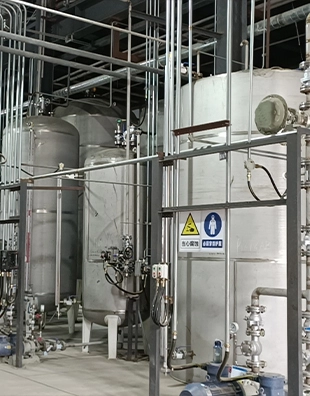Study on the Applications of Diethylenetriamine Penta Methylene Phosphonic Acid in Industry
The Versatile Applications of Diethylene Triamine Penta (Methylene Phosphonic Acid) - DTPMPA
Diethylene Triamine Penta (Methylene Phosphonic Acid), commonly abbreviated as DTPMPA, is a highly effective chelating agent and phosphonate compound that plays a significant role across various industries. With a complex structure that incorporates multiple phosphorus atoms, DTPMPA has become indispensable in several applications, particularly in water treatment, detergent formulations, and chemical manufacturing.
Chemical Structure and Properties
DTPMPA is characterized by its five methylene phosphonic acid groups attached to a diethylene triamine backbone. This unique structure endows the molecule with remarkable capabilities to chelate metal ions and inhibit scale formation, making it a valuable asset in environments where water hardness and metal corrosion pose significant challenges. The phosphonic acid groups facilitate strong interactions with metal ions, thus preventing their precipitation and accumulation on surfaces.
Applications in Water Treatment
One of the most prominent applications of DTPMPA is in water treatment processes. Water often contains a variety of dissolved minerals and metal ions, such as calcium and magnesium, that can lead to scale formation in pipes and machinery. DTPMPA effectively binds to these ions, keeping them in solution and mitigating the risk of scale buildup. Additionally, its ability to sequester heavy metals makes it valuable in controlling water quality in industrial processes and municipal water systems. By employing DTPMPA in water treatment, industries can enhance the efficiency of their operations, reduce maintenance costs, and minimize environmental impact.
Role in Detergent Formulations
The use of DTPMPA extends beyond water treatment; it is also widely incorporated into detergents and cleaning products. The molecule’s chelating properties allow it to soften water, enhancing the performance of surfactants and improving the overall effectiveness of cleaning formulations. By preventing the interference of metal ions present in hard water, DTPMPA ensures that detergents can work optimally, resulting in better stain removal and overall cleanliness.
diethylene triamine penta methylene phosphonic acid

Furthermore, DTPMPA contributes to the stability of detergent formulations, preventing the precipitation of calcium and magnesium salts that could compromise product performance. Its incorporation into laundry and dishwashing detergents helps maintain brightness in fabrics and dishes while ensuring that surfaces remain free from unwanted residues.
Industrial and Chemical Manufacturing Applications
In addition to its roles in water treatment and household products, DTPMPA proves invaluable in various industrial applications. It is employed as a corrosion inhibitor in cooling systems, preventing metal degradation caused by exposure to aggressive environments. Moreover, DTPMPA is used in the oil and gas industry, particularly in drilling fluids and enhanced oil recovery processes. Its ability to inhibit scale formation and reduce the toxicity of heavy metals enhances operational efficiency and safety.
DTPMPA's outstanding performance as a chelating agent also finds utility in the production of fertilizers and agricultural chemicals. By controlling metal availability in the soil, it aids in the prevention of nutrient lock-up, ensuring that essential minerals are readily accessible to plants. This dual action of providing nutrients while controlling harmful metal ions underscores DTPMPA's importance in sustainable agricultural practices.
Environmental Considerations
Despite its widespread usage, concerns regarding the environmental impact of phosphonates have emerged. DTPMPA, while offering numerous benefits, must be carefully managed to prevent potential ecological consequences linked to phosphorus runoff. The development of biodegradable alternatives and stringent regulations surrounding phosphonate use are currently topics of discussion within the industry.
Conclusion
Diethylene Triamine Penta (Methylene Phosphonic Acid) stands out as a multifunctional compound that addresses critical challenges across various sectors. From enhancing water treatment processes to improving the efficacy of cleaning products, DTPMPA’s contributions cannot be overstated. As industries continue to seek efficient and sustainable solutions, the role of chelating agents like DTPMPA will remain essential, driving innovations while ensuring a balance with environmental stewardship.
-
Water Treatment with Flocculant Water TreatmentNewsJun.12,2025
-
Polymaleic AnhydrideNewsJun.12,2025
-
Polyaspartic AcidNewsJun.12,2025
-
Enhance Industrial Processes with IsothiazolinonesNewsJun.12,2025
-
Enhance Industrial Processes with PBTCA SolutionsNewsJun.12,2025
-
Dodecyldimethylbenzylammonium Chloride SolutionsNewsJun.12,2025





